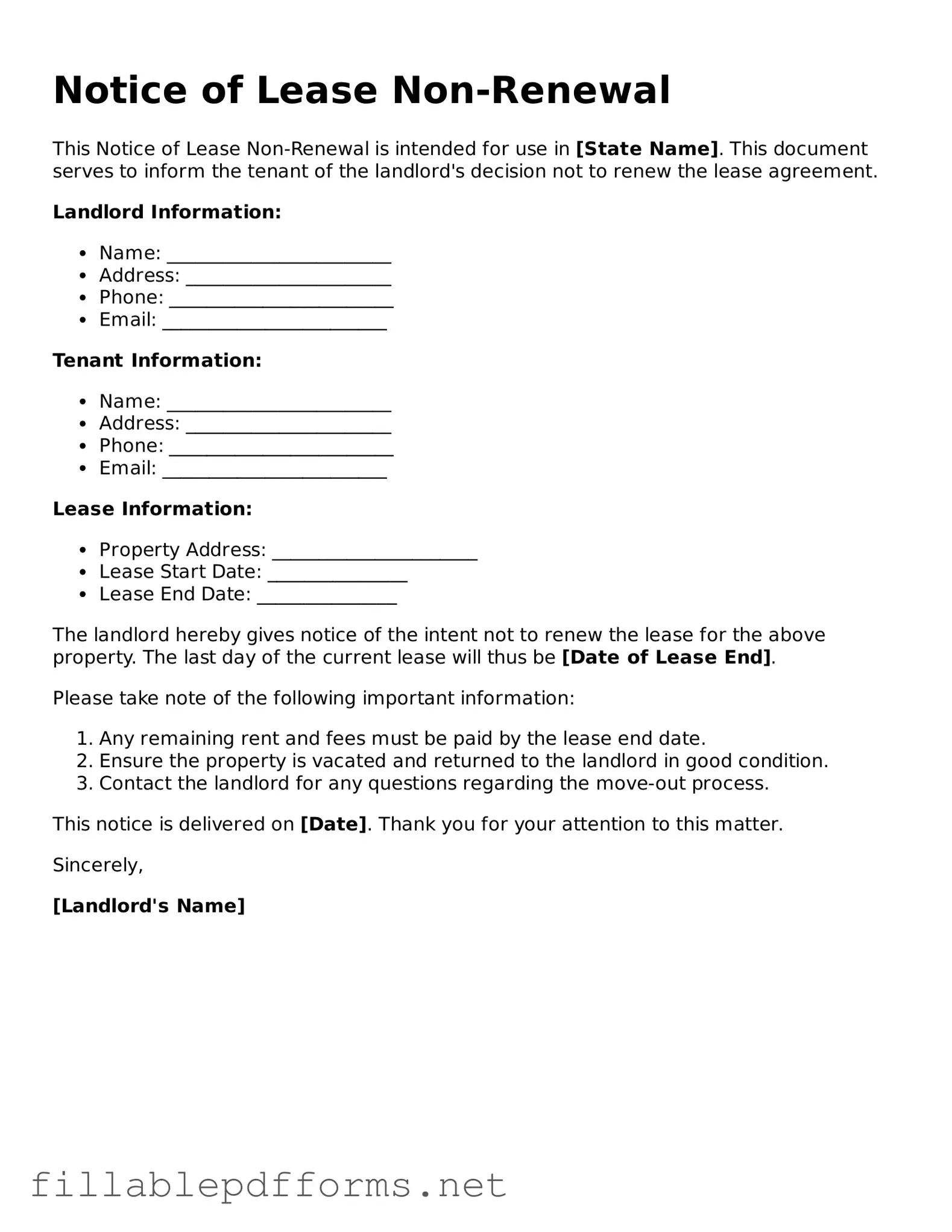The Notice of Lease Non-Renewal form serves as a crucial document in the leasing process, particularly for landlords and tenants who are approaching the end of their lease agreements. This form notifies the tenant that their current lease will not be extended beyond its expiration date. It is essential for maintaining clear communication and ensuring that both parties are aware of the lease's status. The form typically includes important details such as the names of the landlord and tenant, the property address, the lease expiration date, and the specific date by which the notice is being provided. Additionally, it may outline any obligations the tenant must fulfill before vacating the property, such as returning keys or addressing any damages. Understanding the contents and implications of this form can help prevent misunderstandings and disputes, making it a key component in the transition from tenancy to non-tenancy.
